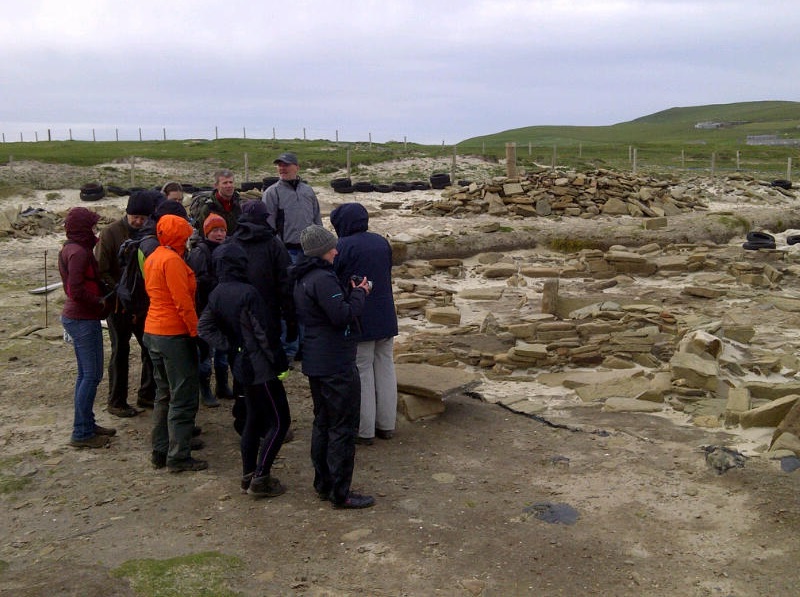Orkney’s archaeological excavation season is well and truly up and running with work at The Cairns in South Ronaldsay kicking off 2016 in style.
There is always a wide range of interesting digs across the islands and many of them welcome visitors, with archaeologists on hand to showcase their work and the fascinating sites they’re focused on.
The Ness of Brodgar is arguably the most well known and will once again offer daily tours when the 2016 season starts next month. Find out more from the latest blog on Orkney.com. You can also view our special section on Orkney's incredible history.
If you’re keen to experience some of Orkney’s other excavations here are details of where to go and when…
The Cairns, South Ronaldsay
Dig Dates – 13th June to 8th July

The Cairns is an Iron Age settlement on the hillside overlooking Windwick Bay in South Ronaldsay. The site includes buildings and evidence of use surrounding a large broch which has been the main focus of investigations for the past decade.
The team, led by Martin Carruthers from the Archaeology Institute UHI, will this year be studying how brochs were used and how the broch setting at The Cairns is influenced by the presence of a Neolithic mound at the site.
Visitors are welcome to view the site and the ongoing project. Get there by travelling on the A961 across the Churchill Barriers and through South Ronaldsay before turning left at the signposted junction for Windwick.
Follow the project on Facebook for regular updates.
Swandro, Rousay
Dig Dates – 4th July to 29th July

The project at the Knowe of Swandro in Rousay is a real race against time. The remains of a Neolithic chambered tomb sit on the shoreline, under real threat from coastal erosion. A team of experts is joined by archaeology students every year to excavate the site and gather as much information as possible before it’s too late.
There are Iron Age structures at the site too and finds have included bones, tools and a coin thought to date from around 900AD.
Workers will be at the Knowe of Swandro for much of July and there are usually open days for visitors. Otherwise feel free to head along and take in the site as part of the Westness Heritage Walk, which includes some of the best archaeological attractions in Orkney. You can also follow the project on Facebook.
Visit the Orkney Ferries website for more information on travelling to Rousay.
Links of Noltland, Westray
Dig Dates - 20th June – late August

The Links of Noltland excavation in Westray is another threatened by coastal erosion. The site sits amongst sand dunes close to the shore and over the last nine years around 30 buildings have been uncovered. They range from Neolithic to Bronze Age structures and Noltland also includes middens, ancient fields, a cemetery with more than 100 burials and a fantastic burnt mound find last year, thought to have been used as a sauna.
The Links of Noltland also provided the famous ‘Westray Wife’ find – a Neolithic stone figurine. It, along with two other figurines found at the site, is on display in the island’s heritage centre.
The project is run by EASE Archaeology, funded by Historic Environment Scotland. Visitors are more than welcome between 10am and 4pm, Monday to Friday. Longer tours are available from local tour company Westraak. You can also follow updates on Facebook.
Find out how to get to Westray with Orkney Ferries and Loganair.
Smerquoy, St Ola
Dig Dates – 4th August to 26th August

Smerquoy sits on the western bank of Wideford Hill with sweeping views over Orkney’s west mainland. Excavations over recent years have uncovered the remains of a rectangular structure which is similar to other Neolithic-era houses in Orkney. Initial investigations have shown that the structure could be from around 3300BC.
The site also produced the oldest example of Neolithic art in Orkney. A decorated stone could be from around 3200BC. It’s thought there has a been a long period of occupation at Smerquoy across thousands of years.
You can visit Smerquoy during the dig period although access is limited as the excavations are being carried out on private land.